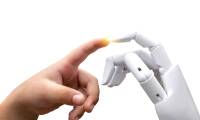
Real human robots are gaining popularity in the real world. Recently, scientists in Japan have created a 'kid' robot named Nikola
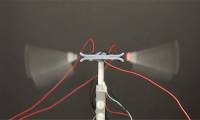
UK's University of Bristol has successfully developed a robot that can flap its wings and generate more power than insects of the same size.
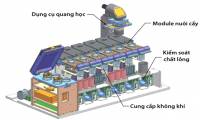
Equipped with AI technology, robot nannies can monitor, care for, even evaluate and rank embryos while nurturing in the lab.
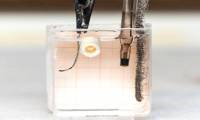
Scientists develop new materials for robotics that can expand and fill in bone defects in the future.
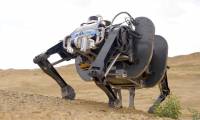
Analysts say China has developed the world's largest electric four-legged biorobot, which can perform tasks in many complex terrains.

Scientists have developed a tiny robot that can be manipulated to deliver drugs to specific locations in the blood vessels.

Petra, a San Francisco startup, has developed a semi-autonomous heat-drilling robot 'Swifty' that can cut through the hardest geological formations by crushing rock into powder.

The tiny robot with a diameter of 2mm can draw energy from its surroundings, then automatically collect and transport chemicals.

Crafted and tested by the Shanghai Pudong People's Procuratorate, the AI 'prosecutor' is said to be able to bring charges with

The reaction of the humanoid robot is said to be the most advanced in the world has surprised the creators of this machine.
 Real human robots are gaining popularity in the real world. Recently, scientists in Japan have created a 'kid' robot named Nikola
Real human robots are gaining popularity in the real world. Recently, scientists in Japan have created a 'kid' robot named Nikola UK's University of Bristol has successfully developed a robot that can flap its wings and generate more power than insects of the same size.
UK's University of Bristol has successfully developed a robot that can flap its wings and generate more power than insects of the same size. Equipped with AI technology, robot nannies can monitor, care for, even evaluate and rank embryos while nurturing in the lab.
Equipped with AI technology, robot nannies can monitor, care for, even evaluate and rank embryos while nurturing in the lab. Scientists develop new materials for robotics that can expand and fill in bone defects in the future.
Scientists develop new materials for robotics that can expand and fill in bone defects in the future. Analysts say China has developed the world's largest electric four-legged biorobot, which can perform tasks in many complex terrains.
Analysts say China has developed the world's largest electric four-legged biorobot, which can perform tasks in many complex terrains. Scientists have developed a tiny robot that can be manipulated to deliver drugs to specific locations in the blood vessels.
Scientists have developed a tiny robot that can be manipulated to deliver drugs to specific locations in the blood vessels. Petra, a San Francisco startup, has developed a semi-autonomous heat-drilling robot 'Swifty' that can cut through the hardest geological formations by crushing rock into powder.
Petra, a San Francisco startup, has developed a semi-autonomous heat-drilling robot 'Swifty' that can cut through the hardest geological formations by crushing rock into powder. The tiny robot with a diameter of 2mm can draw energy from its surroundings, then automatically collect and transport chemicals.
The tiny robot with a diameter of 2mm can draw energy from its surroundings, then automatically collect and transport chemicals. Crafted and tested by the Shanghai Pudong People's Procuratorate, the AI 'prosecutor' is said to be able to bring charges with
Crafted and tested by the Shanghai Pudong People's Procuratorate, the AI 'prosecutor' is said to be able to bring charges with The reaction of the humanoid robot is said to be the most advanced in the world has surprised the creators of this machine.
The reaction of the humanoid robot is said to be the most advanced in the world has surprised the creators of this machine.




 NASA's 'Ninth Planet' Shows Signs of Being Friendly to Life
NASA's 'Ninth Planet' Shows Signs of Being Friendly to Life Why did American astronauts have to be quarantined when returning to Earth?
Why did American astronauts have to be quarantined when returning to Earth? China surprises the world by building a cable-stayed bridge 'above the clouds'
China surprises the world by building a cable-stayed bridge 'above the clouds' Why do women sleep less and wake up more than men?
Why do women sleep less and wake up more than men? Revealing the secret inside the stuffed animal claw machine, from there, summarizing experience to help you increase your winning rate many times over
Revealing the secret inside the stuffed animal claw machine, from there, summarizing experience to help you increase your winning rate many times over What would happen if you dug a hole through the Earth and jumped in?
What would happen if you dug a hole through the Earth and jumped in? Camera takes a photo that lasts 1,000 years
Camera takes a photo that lasts 1,000 years Was there nuclear war in ancient times?
Was there nuclear war in ancient times?